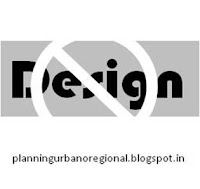Why
average outcome doesn’t work for average urban population?
Why city ranking may not
necessarily be a reflection of the state and policies of a city and might not
be of much direct or immediate relevance for average stable urban population
other than attracting business and outside population and tourists? A city
provides and should provide a very unique opportunity to each individual
through its unique micro environmental influences which most often supersedes
the average ambient environment of a city which is showcased by positioning of
a city on varied ranking scale ranging from livability to competitiveness and
so on. An average ambient environment of any city (economically or otherwise)
might not be a reflection of actual environment for an individual or unique
sets of individuals with similar needs, like - people falling under different
hierarchical economic profiles from extremely poor to ultra-rich, working and
voluntarily non-working population, skilled and unskilled section, jobless
people, children, aging population, differently abled segment, entrepreneurs,
educationalist, illiterate population, people with health and lifestyle
issues, government representatives,
corporate lobbies and countless urban social hierarchies and so on and on, each
segment with differing needs and aspiration seeking and demanding distinct
opportunities and support structure! That “n”th global or national rank of a
city which is representation of average situation of city life doesn’t make
much immediate sense to each of the above segments since most of the population
is either one side or other of average with their very distinct situations and
needs from the projected average. It’s not much of relevance unless it gets
translated into their customized needs, enhanced economic condition, lifestyle
and peace of mind and doesn’t directly relate to their livelihood opportunities
and their specific needs.
Apparently, there is a
fundamental issue with the methodology and process of determining rank of a
city. An issue with “Samplifying” the population, though samples apparently
being inclusive and heterogeneous! Simply being inclusive won’t work, choosing
a heterogeneous sample groups also won’t, because both of these approach will
only lead to an average outcome, a clumsy generalized outcome which is bound to
be alienated from the highly specific needs of individual components and groups
which makes the society, which makes that supposedly heterogeneous and
inclusive sample as well. Needs of a highly diversified society or a city with
further diversified economic profile, age group, ethnicity, regional needs,
conditioning and so on can’t be met by a single average solution, no matter how
inclusive that solution sounds, no matter how heterogeneous was the sample. For
example, you can’t simply average out the needs of a beggar and a millionaire,
both part and parcel of a city, and come up with an average solution which
should work for both of them. They need totally different solutions to grow and
sustain. Hence the ranking of city based on accumulative impression of its
different components, both tangible and perceived, which is an “Average” might
give a deceptive impression of opportunities which any city provides for its
inhabitants, does that sweeping statement like the best city to live in or so
means that this particular city provides equal or ample growth opportunities for
millionaires as well as the poorest section of the city or to the diversified
segments as discussed earlier, or does it anyway gives an account or impression
of having diversified livelihood instruments and strategies in form of public
policies for different strata of city society. Public strategies and instruments are very distinct and regional in nature which can’t be quantified
in a manner to be compared globally or nationally on a same appraisal scape
with other cities! We need a very tender approach to deal with specifics of
urban livelihood opportunities and state of its people, ranking seems over
simplification at times, we need to do a reality check!
All said and done we still
agree that city ranking is must, whether on the scale of livability or
competitiveness or so on! Because it gives a scale of competitiveness on which
city heath is monitored and compared with the benchmarked cities. A scale, on
which the growth performance of a city can be monitored! Hence it helps shape
the aspirations of a city and helps pave the way for its sustainable future.
City ranking has a larger purpose to serve than just to conclude the state of infrastructure and ambient environment, city ranking creates an image of a city
which further draws attention of world and hence attracts investment and
generate revenues which further gets channelized in the making of a city
through increased economic activities, strengthened infrastructure, enhanced
regional accessibility, increased livelihood opportunities and so on. But apparently
still city ranking is more of the external representation through its image
building aspect than the state of actual internal health and opportunities in a
city! Also a catch here, while creating a positive image of a city through
ranking tools, originally envisaged to attract business and high spending
population i.e. tourists, corporate activities etc., this enhanced image also
accelerates the process of in-migration from the neighboring regions in search
of better projected livelihood opportunities which further calls for urgent
expansion of already constrained city infrastructure, delay of which can cause
the damage to the same city image which they are deliberately trying to create,
hence an image deficit vicious cycle. Focus has to be on autonomous networked
decentralization in the region through regional ranking instead of / in
addition to city ranking which otherwise encourages choking concentration of
city. City doesn’t function in isolation; it’s a resultant of overlapping
regional activities hence the focus should be on regional ranking, a periodic
regional assessment, assessment beyond SWOT, call it ranking or whatever, which
is much inclusive and more realistic in nature.






